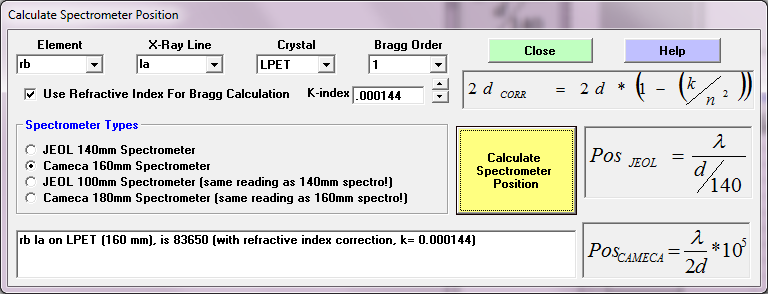However, I am running into a number of spectral interferences that need to be corrected, for example Rb is seemingly interfered by both Si and K. The interference standard for Rb interfered by Si is easy, SiO2, but finding an interference standard for Rb interfered by K is harder, since almost anything I can find that contains K, also contains Si, and one can't use a standard for an interference correction that contains additional interfering elements.
Usually I use PET to analyze for Rb; interferences from Si Kα and K Kα(2) are not a problem. Can you not do this on the SX-100? I can't remember. At any rate, KTiOPO4 might work well as a standard. I have the materials to synthesize it. Should I give it a try?
That's a good question and CalcZAF can answer it:

So, technically the peak position is just barely inside the Cameca spectrometer limit (~83800), but the high off-peak position won't be inside the limit, so no the Cameca cannot really do Rb La on a PET crystal. Though I guess one could go with "same side" off-peaks:
https://probesoftware.com/smf/index.php?topic=68.msg6255#msg6255and place both off-peaks on the low side and extrapolate, but then you've got the giant Si Ka line and its extended tails there interfering with the off-peak positions. But now I'm kind of actually enjoying the challenge of this interference correction!
Actually I've decided to start a new topic in the Probe for EPMA board on this trace analyses attempt in orthoclase because to be honest, I'm running in to other sorts of troubles and would appreciate any advice.
KTiOPO4 would be an excellent standard for this interference correction, but don't go to the trouble. First let me see if I can find it at ESPI or another source. If it's an industrial material it shouldn't be too expensive.